The 9th planet- Did you know that
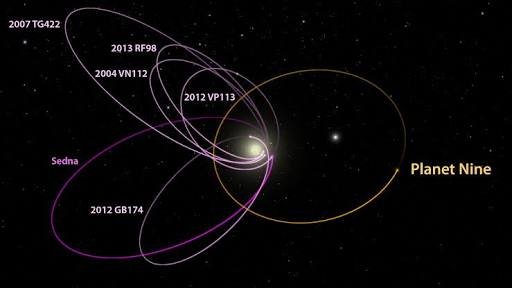
The 9th planet
In 2016, our comprehension of our astronomical home may have taken its most noteworthy jump forward since the revelation of Uranus smashed our then view of a six-planet framework and extended the nearby planetary group out of the blue. This year, in January came the declaration of a scientific and orbital-trademark gathered "revelation" – progressively an expectation in view of confirmation – of a huge, super-Earth, ice monster in a 200 x 1,200 AU circle that, if affirmed, would speak to the ninth planet in our nearby planetary group.
'Planet Nine' – a speculative find past the Scattered Disk:
To begin with proposed in 2014 by Chad Trujillo and Scott S. Sheppard, who derived the presence of a yet-obscure monstrous body from strikingly comparable peculiarities in the circles of two Trans-Neptunian Objects (Sedna and 2012 VP113), Planet Nine was pushed immovably into people in general and planetary focus on 20 January 2016. 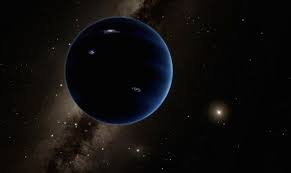
On that day, a moment group of analysts – Michael Brown and Konstantin Batygin – reported a substantially more point by point clarification of Planet Nine, including its impact on six watched Trans-Neptune Objects (TNOs) and its proposed mass and orbital qualities – all of which Brown and Batygin contend would clarify the exceptionally doubtful design of a gathering of TNOs in the Scattered Disk.
The Scattered Disk is a gathering of frigid questions in the external scopes of the nearby planetary group. By separate, bits of the Scattered Disk cover with the Kuiper Belt; be that as it may, its cutoff points broaden more remote above and underneath the ecliptic plane and well past those of Kuiper Belt.
Taking all things together, the new research and numerical conditions propose that Planet Nine is 10 times more monstrous than Earth, has a measurement of two to four times that of Earth's, and is situated in a very circular circle with a time of 10,000 to 20,000 years and a semi-significant hub (range of the circle at the circle's two most removed focuses) of 700 AU – 23 times more remote from the Sun than Neptune. 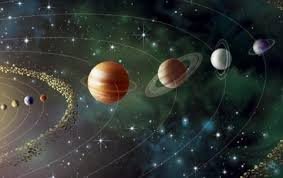
Also, Planet Nine's circle is surmised to hold an aphelion of 1,200 AU and a perihelion of 200 AU with a slant of 30° to the ecliptic plane – generally in accordance with the other known TNOs with substantial slants to those watched somewhere else in the nearby planetary group.
At aphelion, Planet Nine would be in the general area of the Orion and Taurus star groupings, while perihelion would put the planet in close Serpens, Ophiuchus, and Libra.
This scientific and other-body observationally surmised disclosure of a planet isn't new to our investigation of the nearby planetary group.
Neptune's visual disclosure on 23 September 1846 was gone before by a scientific forecast of Neptune's presence and area in light of watched bothers in Uranus' circle.
So exact, truth be told, were Urbain Le Verrier's counts of Neptune that the planet was found inside 1° of where Le Verrier anticipated it would be on the principal night that perceptions to discover the planet were attempted.
On the off chance that it's there, where did it originate from?
Significantly, in view of current perceptions of the outrageous external close planetary system, the presence of such a huge planet like Planet Nine is conceivable.
A 2009 overview by NASA's Wide-field Infrared Survey Explorer (WISE) presumed that a Neptune-sized question could exist at a separation more prominent than 700 AU; a recent report accordingly discounted the presence of a Jupiter-mass planet to a separation of 26,000 AU – two revelations that would not preclude Planet Nine's exitance at its proposed mass, width, and separation.
On the off chance that Planet Nine does in fact exist, there are as of now four thoughts with respect to its creation and how it got to its present-day circle.
The initially, and in all probability, clarification is that Planet Nine framed with Jupiter and Saturn and was launched out to its removed, offbeat circle following close experiences with these two gas mammoths amid the nebular age of the early nearby planetary group.
Once shot out, Planet Nine's unusualness, which was at first considerably more prominent, was lessened and its perihelion raised either by a procedure called dynamical rubbing (loss of force and motor vitality of moving bodies through gravitational associations with encompassing issue in space) from the vaporous leftovers of the sun powered cloud that the Sun and nearby planetary group framed in, or by gravitational communications with alternate stars that shaped in
a similar birth bunch as the Sun.
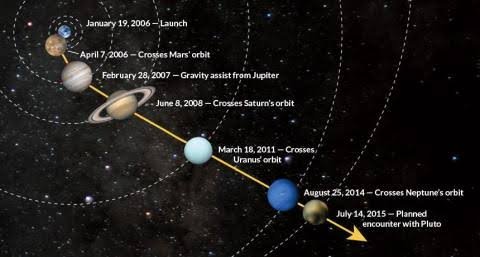
This would likewise serve to clarify the mass and size of Planet Nine – as this sort of launch would have enormously ended Planet Nine's advancement and left it at generally an indistinguishable mass from Uranus and Neptune.
Besides, for the deduced circle to be accomplished under this model, Planet Nine would need to have been launched out between 3 to 10 million years after the arrangement of the nearby planetary group.
Imperatively, this discharge of Planet Nine 3-10 million years after close planetary system arrangement would not diminish the Nice model of nearby planetary group advancement – which demonstrates that an exchange of vitality from the external plate of planetesimals departed over from the underlying development of the close planetary system aggravated the delicate fourfold reverberation of Jupiter, Saturn, Neptune, and Uranus.
This destabilization of the fourfold reverberation brought about an expanding unconventionality of the internal ice goliath (seventh planet – for this situation, Neptune) that hence pulled every one of the four gas and ice mammoths outward from the Sun.
The further breakdown of the mainstream reverberation between the internal ice goliath and external ice monster (Uranus) prompted gravitational associations between the two, which in the end flung Neptune out of its circle and sent it plunging through the external plate.
As Neptune cleared through the external plate, it exasperates the planetesimals – framing the Kuiper Belt while sending a few planetesimals significantly more distant, making the Scattered Disk seen today.
In the meantime, Neptune flung an extensive number of planetesimals toward the sun. Some of these were snatched by Jupiter (the gas goliath's trojans found in its L4 and L5 Lagrange Points) while others proceeded into the close planetary system, representing the Late Heavy Bombardment in the vicinity of 4.1 and 3.8 billion years prior.
In this way, given the planning of the occasions accepted to have prompted the orbital realignment of the gas and ice monsters and the Late Heavy Bombardment, Planet Nine would have been launched out 490 million to 697 million years earlier – sufficiently giving time for the four outstanding gas and ice mammoths to orchestrate and after that destabilize.
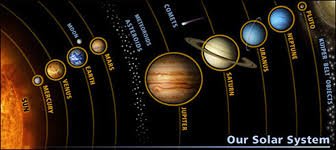
Hence, Planet Nine would not be in charge of the Late Heavy Bombardment.
The second probability of Planet Nine's beginning is that it's not local to our nearby planetary group. Under this clarification, Planet Nine would have framed in the most distant compasses of its unique parent framework and in a similar birth bunch as the Sun.
As the youthful stars and frameworks connected, the Sun passed sufficiently close to Planet Nine to "get it" and "take" it from its parent.
In any case, given the present circle Planet Nine is comprehended to be in, this clarification is just 1-2% likely.
On the other hand, Nine could have framed with whatever remains of the nearby planetary group in an amazingly far off, roundabout circle that was then irritated to its present unpredictability when the nearby planetary group passed near another star in its introduction to the world bunch.
This kind of development would drastically reshape our comprehension of the early close planetary system as the Sun would either 1) need to have had an enormous circle of material far bigger and more far reaching than already thought conceivable or 2) there would need to have been a noteworthy outward float of strong material getting away from the accumulating plate that framed the eight planets. This outward floating material would then have needed to shape a ring in which Planet Nine would then have accumulated.
Under this model, with such a far off and whimsical circle, the chances that Planet Nine would not have been stolen by another star are just 10%, which means the planet would need to have beaten unprecedented chances to stay with the nearby planetary group through its introduction to the world and disintegration of the Sun's introduction to the world bunch.
At long last, the fourth probability is that Planet Nine began in the internal close planetary system and was shot out to its present area as Jupiter relocated internal from its arrangement circle in the early advancement time.
This is profoundly far-fetched however not unlikely as the shot of such a question being catapulted by Jupiter at simply the privilege the speed to end up in a steady circle past the Scattered Disk and not be tossed totally out of the nearby planetary group is just 2%.
In any case, Planet Nine will enormously help our comprehension of early nearby planetary group advancement and could help answer the topic of why our close planetary system has no planets with masses amongst Earth and Neptune (which is 17 times the mass of Earth) – an event that makes our nearby planetary group fairly exceptional among watched planetary frameworks to date.
How are we endeavoring to discover it?
While the greater part of this guess of how Planet Nine framed and where it originated from – and additionally the impacts it's having on the extraordinary TNOs watched – is legitimate, nothing can be addressed totally until the point that the planet is really discovered outwardly or by solid strategies for aberrant location.
To this end, given the extraordinary separation of Planet Nine, researchers are utilizing both circuitous and direct techniques for discovery in a purposeful push to limit the potential outcomes of where Planet Nine is in its circle, where its gravitational impacts may be seen, and what those gravitational impacts could enable us to clarify about the watched close planetary system.
Aberrant discovery:
One of the principal instruments utilized in the scan for Planet Nine was the Cassini shuttle in circle of Saturn.
